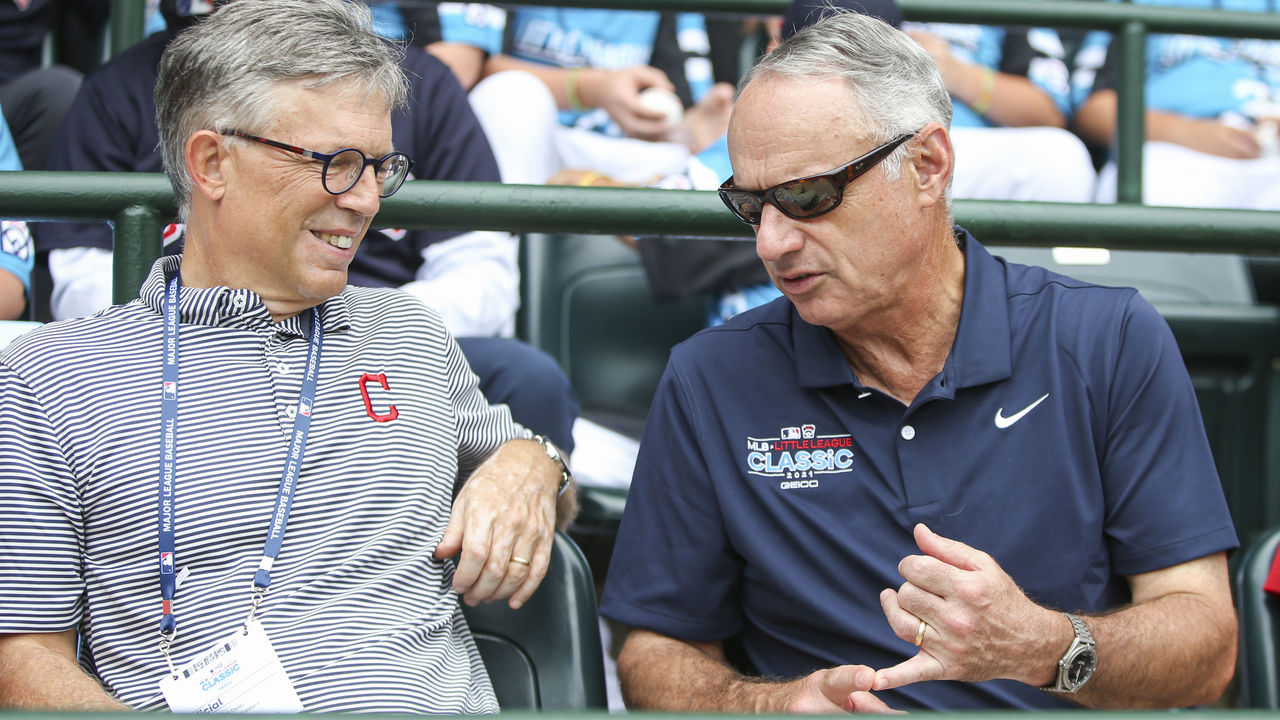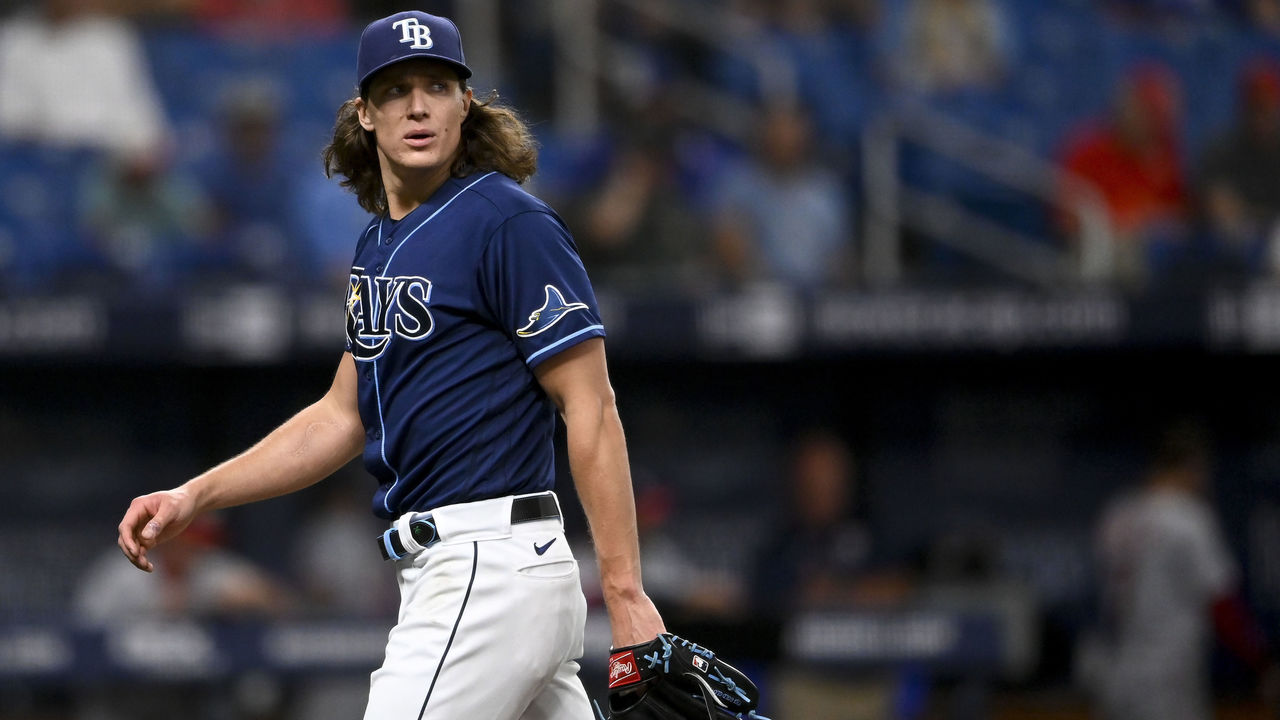What we've learned since the Atlantic League moved back the mound
After the final out of the Lexington Legends' game Aug. 1, the grounds crew dumped ice on the pitching and bullpen mounds at Lexington Legends Ballpark, the home of the independent Atlantic League club. Overnight, the ice would melt, making the next morning's task easier: For the first time since 1893, a professional baseball league was changing the distance between the pitcher's mound and home plate.
On Aug. 2 - an off day in Lexington, Kentucky, and in Charleston, West Virginia - grounds crews moved the pitching rubber back 12 inches and adjusted the mound shape, but they did it a day earlier than they were supposed to due to a misunderstanding about when the second half of the season started. MLB OK'd the early move, and on Aug. 3, West Virginia Power pitcher Joe Harris became the first professional pitcher to throw from 61 feet and 6 inches.
All over the Atlantic League that week, grounds crews went to work with compactor plates, hand tamps, rakes, and measuring tools to move the mounds back 1 foot. The league is a laboratory mouse this summer because MLB is increasingly concerned about strikeouts warping the game - it wants more balls in play.
So what's happened in the three weeks since the pitcher's mound was moved back?
Run scoring hardly budged, and is actually down 1%, from 6.73 runs per nine innings in the first half compared to 6.66 in the three weeks since the change.
Strikeouts actually increased in the first three weeks since the move, 7.72 per nine innings, compared to 7.68 in the first half (a 0.6% increase). Walks have declined 7.5%, from 5.11 per nine to 4.86.
Batting average has remained nearly flat (.278 before to .276 after) but there is an 8% increase in home runs per nine innings (1.16 to 1.25) and a slight tick upward in slugging percentage - .446 to .454 - since the midway point.
While the sample is small, and significant roster changes complicate the comparison, it's perhaps not quite the offensive jolt MLB expected.
For anyone curious, this is what 61 feet 6 inches looks like from the back of home plate to the pitching rubber. pic.twitter.com/CAHCsrHped
— Cameron Drummond (@cdrummond97) August 21, 2021
Before the season, MLB claimed the change would make a 93.3 mph fastball from the standard mound the equivalent of a 91.6 mph fastball from the new mound. MLB is essentially trying to turn back the clock on pitching velocity. During the pitch-tracking era (dating back to 2007), average fastball speed increased from 91.8 mph in 2008 to a record 93.7 mph this season.
MLB hitters own a .263 batting average against 93 mph four- and two-seam fastballs this season. When those pitch types come in at 91 mph instead, their batting average rises to .302.
But Atlantic League hitters have not enjoyed a dramatic boost to date.
Perhaps the sample is not large enough to be that meaningful, or perhaps the benefits of giving batters a few more milliseconds to watch the ball travel are eroded by increased pitch movement due to the additional distance.
#AtlanticLeague sliders averaged 4.6 inches HBreak and 5.94 inches VBreak at 81.39 MPH. With curveballs averaging 76.9 MPH and 7.48 HBreak and 6.8 inches VBreak.
— Robert M. Pimpsner (@RPimpsner) August 5, 2021
MLB first broached a partnership with the Atlantic League during the 2018 winter meetings in Las Vegas.
After a 75-minute meeting with MLB officials at the sprawling Mandalay Bay resort, commissioner Rick White returned to his hotel room, where his wife anxiously waited to hear how discussions had gone with the leaders of a $10 billion industry.

"I said, 'I think I just attended the most profoundly important meeting I will ever attend on behalf of the Atlantic League,'" White told theScore earlier this week. "'This is a game-changer for us.'"
"She said, 'Congratulations, you must be incredibly excited.'"
"'No, I'm really not,'" White recalled responding. "'I'm not sure our board is going to accept the proposal.'"
Atlantic League officials and owners had concerns about potential injuries. MLB released a study of college pitchers throwing fastballs from extended distances that suggested there were no major additional risks, but it was conducted in a lab environment. And the Atlantic League brass was worried about whether the game would still resemble baseball.
But officials also reasoned that they had a chance to give the world a glimpse of the potential future of the sport while partnering with the top baseball league in the world. MLB would outfit Atlantic League facilities with TrackMan ball-tracking technology, which could be good for players, as the data would be shared with all major-league teams. Eventually, in early 2019, the Atlantic League and MLB hammered out a deal. This is the second year of the three-year pact, White said.
The ideas that came out of that meeting included an automated strike zone, which has been in use all season; the double-hook rule, which ties the DH to the starting pitcher being in the game; and the most extreme experiment, moving the pitching mound back at midseason in 2020 and comparing the two halves.
After COVID-19 wiped out the season and mound experiment last year, MLB and the Atlantic League agreed to move the mound a foot back this year instead of following through on the original plan of a 2-foot shift. MLB determined 61 1/2 feet was "the minimum interval needed to evaluate a change in mound distance."
That evaluation is complicated by the fact that rosters have changed dramatically since the start of the season: 37% of players on the Atlantic League's Opening Day rosters are now in affiliated baseball, according to White, preventing a true apples-to-apples comparison. White said that the number of injuries in professional baseball, along with the loss of 42 teams due to consolidating the minor leagues, left affiliated baseball short on players, and it turned to the Atlantic League to fill spots.
Nevertheless, White has noted a couple of interesting pitching trends since the mound was moved.
Pitch selection is different, he said; pitchers are throwing fastballs 3.5% more often. And pitchers appear to be making a mechanical adjustment.
"Arm slot hasn't materially changed," White said. "However, release points, especially on breaking pitches, have been subject to a modest adjustment because a ball that was intended to break as it approached (the plate) … is now breaking in front of the plate. Our umpires were reporting to us that our pitchers were throwing a lot of breaking pitches in the dirt."
Many players and coaches grumbled about the move as it approached, according to one Atlantic League team official. White heard the complaints, too. MLB and Atlantic league officials held two Zoom calls - one for coaches and one for players - before moving the mound. White said the majority of coaches, but not all, appeared on the call, but only 19 players from the league of more than 200 joined their call, and there weren't any questions.
Some major-league players aren't exactly thrilled with the idea either.

Earlier this year, Tyler Glasnow told theScore that moving the mound back was "the dumbest thing I have ever heard."
"I think there's obviously some logic in changing the game to try and keep up with the times, but it seems like it's all these shots out of left field. It seems like too much, too fast," the Tampa Bay Rays ace said.
White said injuries haven't spiked in the three weeks since the move, though some pitchers have complained about soreness. Based on White's consultations with experts, he doesn't believe pitchers are at an elevated risk of getting hurt at the new distance.
He said players are also concerned about how the change could impact their stats and, by extension, their dreams of returning to affiliated baseball or another pro league.
White told players and staff that MLB teams are more interested in underlying data - like spin rate, throwing velocity, and exit velocity - than their traditional stats. At this point, there isn't much of a difference in the latter, though of course it's only been three weeks and there are other factors at play.
White doesn't believe MLB is in a hurry to make a radical change. Perhaps the majors' policing of sticky stuff reduces the need to consider switching to 61 1/2 feet, though White said MLB hasn't expressed that to him. Regardless, how the rest of the season plays out in the Atlantic League could go a long way toward determining whether the independent-league experiment becomes a reality on major-league fields.
Travis Sawchik is theScore's senior baseball writer.